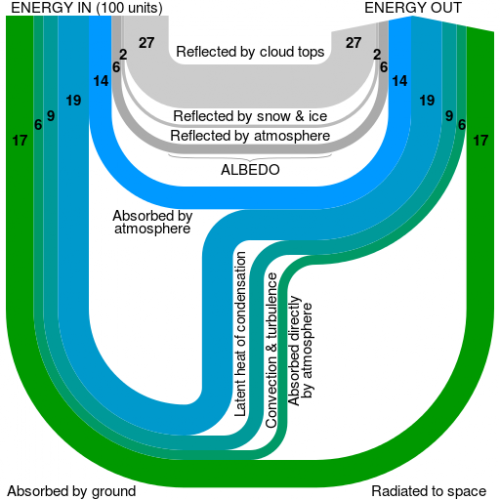Following up on my previous post on Iran’s Energy Balance, here is another Sankey diagram from p. 54 the latest edition of ‘Iran and World Energy Facts and Figures, 2012’ by the Ministry of Energy (MOE) of the Islamic Republic of Iran.
Unfortunately the overall national energy balance of Iran is not depicted in the 2012 edition of the report any more.
This Sankey diagram focuses on electric energy only. Flows are in GWh per year (in 2012). Fuel sources for electricity generation are broken down in thr first arrow. Losses branch out at the ‘pow plant’ node as a blue arrow. The generated electricity is further broken down in the vertical arrow into consuming sectors. The overall efficiency of the power plants is at approximately 34%. Note how the small arrow head peeking out to the left is not to scale, and understates the 63.6% transformation losses.
Nuclear energy is less than 1% of the overal electricity production. In 2011, the first year of production 327 GWh were produced from nuclear fuel, upping to 1847 GWh in 2012. See p. 50 of the report.
